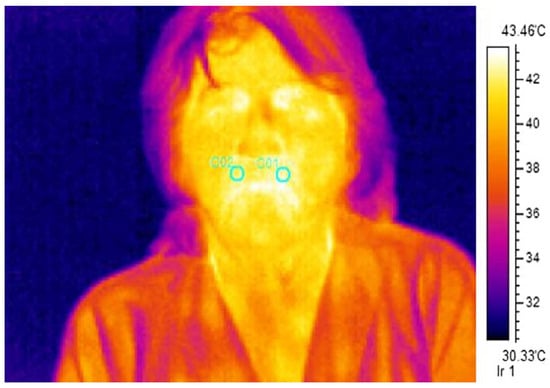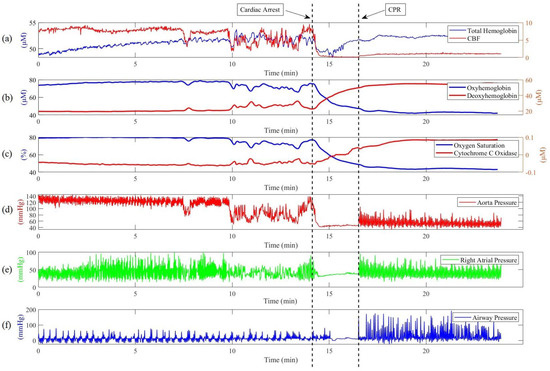Biomedical Optics: From Methods to Applications
Share This Topical Collection
Editor
 Dr. Vladislav Toronov
Dr. Vladislav Toronov
 Dr. Vladislav Toronov
Dr. Vladislav Toronov
E-Mail
Website
Collection Editor
1. Department of Physics, Faculty of Science, Ryerson University, Toronto, ON M5B 2K3, Canada
2. Institute of Biomedical Engineering, Science and Technology (iBEST), Li Ka-Shing Knowledge Institute, Toronto, ON M5B 1T8, Canada
Interests: physics of biomedical imaging (diffuse tomography, photoacoustics, NIRS, MRI); biophotonics; brain imaging
Special Issues, Collections and Topics in MDPI journals
Topical Collection Information
Dear Colleagues,
The field of biomedical optics continues to fascinate scientists, enterprizers, and users by a phenomenal unending production of new ideas, the rapid development of new methods and applications, and the expansion of clinical implementations. In this Topical Collection, we invite submissions from all subfields of biomedical optics, exploring recent advances from ideas through methodology development to clinical applications. Both original research articles and comprehensive review and survey papers are welcome.
Prof. Dr. Vladislav Toronov
Collection Editor
Manuscript Submission Information
Manuscripts should be submitted online at www.mdpi.com by registering and logging in to this website. Once you are registered, click here to go to the submission form. Manuscripts can be submitted until the deadline. All submissions that pass pre-check are peer-reviewed. Accepted papers will be published continuously in the journal (as soon as accepted) and will be listed together on the collection website. Research articles, review articles as well as short communications are invited. For planned papers, a title and short abstract (about 100 words) can be sent to the Editorial Office for announcement on this website.
Submitted manuscripts should not have been published previously, nor be under consideration for publication elsewhere (except conference proceedings papers). All manuscripts are thoroughly refereed through a single-blind peer-review process. A guide for authors and other relevant information for submission of manuscripts is available on the Instructions for Authors page. Applied Sciences is an international peer-reviewed open access semimonthly journal published by MDPI.
Please visit the Instructions for Authors page before submitting a manuscript.
The Article Processing Charge (APC) for publication in this open access journal is 2400 CHF (Swiss Francs).
Submitted papers should be well formatted and use good English. Authors may use MDPI's
English editing service prior to publication or during author revisions.
Keywords
- biophotonics
- diffuse correlation spectroscopy
- fluorescence
- hybrid imaging systems
- hyperspectral imaging
- microscopy
- monte carlo simulation
- molecular sensing
- near infrared spectroscopy (NIRS)
- neurophotonics
- optical clearing of biological tissue
- optical coherence tomography
- optical coherence elastography
- phosphorescence
- photoacoustics
- polarization
- terahertz optics
Published Papers (5 papers)
Open AccessReview
Optical Coherence Tomography as a Biomarker in the Differential Diagnosis between Parkinson’s Disease and Atypical Parkinsonian Syndromes: A Narrative Review
by
Stella Karatzetzou, Dimitrios Parisis, Serafeim Ioannidis, Theodora Afrantou and Panagiotis Ioannidis
Viewed by 556
Abstract
Parkinsonism may be a clinical manifestation of a wide range of disease entities, and still poses a great diagnostic challenge. In an attempt to provide further insight into the differential diagnosis of PD versus progressive supranuclear palsy (PSP), multiple system atrophy (MSA), corticobasal
[...] Read more.
Parkinsonism may be a clinical manifestation of a wide range of disease entities, and still poses a great diagnostic challenge. In an attempt to provide further insight into the differential diagnosis of PD versus progressive supranuclear palsy (PSP), multiple system atrophy (MSA), corticobasal degeneration (CBD), and Lewy body dementia (LBD), several biomarkers have been investigated, yielding inconclusive results, OCT being among them. The present review aims to explore the potential diagnostic value of evaluating retinal parameters through OCT implementation among patients presenting with a Parkinsonian syndrome, with an emphasis on effective differentiation between distinct syndromes. Having reviewed all the available literature published within the last decade, neurodegeneration seems to be paralleled with degeneration and alterations of the retina that may be quantified by OCT. Specific patterns of structural changes within the retina may provide valuable information on the underlying pathology, thus highlighting the role of OCT as a diagnostic tool within this group of patients. Although still not utilized in clinical practice, OCT, if further explored and validated, may significantly enhance overall Parkinsonism care.
Full article
►▼
Show Figures
Open AccessReview
A Review of Techniques and Bio-Heat Transfer Models Supporting Infrared Thermal Imaging for Diagnosis of Malignancy
by
Giampaolo D’Alessandro, Pantea Tavakolian and Stefano Sfarra
Viewed by 1128
Abstract
The present review aims to analyze the application of infrared thermal imaging, aided by bio-heat models, as a tool for the diagnosis of skin and breast cancers. The state of the art of the related technical procedures, bio-heat transfer modeling, and thermogram post-processing
[...] Read more.
The present review aims to analyze the application of infrared thermal imaging, aided by bio-heat models, as a tool for the diagnosis of skin and breast cancers. The state of the art of the related technical procedures, bio-heat transfer modeling, and thermogram post-processing methods is comprehensively reviewed. Once the thermal signatures of different malignant diseases are described, the updated thermographic techniques (steady-state and dynamic) used for cancer diagnosis are discussed in detail, along with the recommended best practices to ensure the most significant thermal contrast observable between the cancerous and healthy tissues. Regarding the dynamic techniques, particular emphasis is placed on innovative methods, such as lock-in thermography, thermal wave imaging, and rotational breast thermography. Forward and inverse modeling techniques for the bio-heat transfer in skin and breast tissues, supporting the thermographic examination and providing accurate data for training artificial intelligence (AI) algorithms, are reported with a special focus on real breast geometry-based 3D models. In terms of inverse techniques, different data processing algorithms to retrieve thermophysical parameters and growth features of tumor lesions are mentioned. Post-processing of infrared images is also described, citing both conventional processing procedures and applications of AI algorithms for tumor detection.
Full article
►▼
Show Figures
Open AccessArticle
Tracking Cerebral Microvascular and Metabolic Parameters during Cardiac Arrest and Cardiopulmonary Resuscitation
by
Nima Khalifehsoltani, Olivia Rennie, Rohit Mohindra, Steve Lin and Vladislav Toronov
Viewed by 1078
Abstract
Hemodynamic models provide a mathematical representation and computational framework that describe the changes in blood flow, blood volume, and oxygenation levels that occur in response to neural activity and systemic changes, while near-infrared spectroscopy (NIRS) measures deoxyhemoglobin, oxyhemoglobin, and other chromophores to analyze
[...] Read more.
Hemodynamic models provide a mathematical representation and computational framework that describe the changes in blood flow, blood volume, and oxygenation levels that occur in response to neural activity and systemic changes, while near-infrared spectroscopy (NIRS) measures deoxyhemoglobin, oxyhemoglobin, and other chromophores to analyze cerebral hemodynamics and metabolism. In this study, we apply a dynamic hemometabolic model to NIRS data acquired during cardiac arrest and cardiopulmonary resuscitation (CPR) in pigs. Our goals were to test the model’s ability to accurately describe the observed phenomena, to gain an understanding of the intricate behavior of cerebral microvasculature, and to compare the obtained parameters with known values. By employing the inverse of the hemometabolic model, we measured a range of significant physiological parameters, such as the rate of oxygen diffusion from blood to tissue, the arteriole and venule volume fractions, and the Fåhraeus factor. Statistical analysis uncovered significant differences in the baseline and post-cardiac arrest values of some of the parameters.
Full article
►▼
Show Figures
Open AccessArticle
Investigating and Compensating for Periphery-Center Effect among Commercial Near Infrared Imaging Systems Using an Indocyanine Green Phantom
by
Johanna J. Joosten, Paul R. Bloemen, Richard M. van den Elzen, Jeffrey Dalli, Ronan A. Cahill, Mark I. van Berge Henegouwen, Roel Hompes and Daniel M. de Bruin
Cited by 3 | Viewed by 1221
Abstract
Near infrared imaging (NIR) camera systems have been clinically deployed to visualize intravenous injected indocyanine green (ICG) spreading through the vascular bed, thereby creating the ability to assess tissue perfusion. While standardization is key to make fluorescence angiography (FA) comparable and reproducible, optical
[...] Read more.
Near infrared imaging (NIR) camera systems have been clinically deployed to visualize intravenous injected indocyanine green (ICG) spreading through the vascular bed, thereby creating the ability to assess tissue perfusion. While standardization is key to make fluorescence angiography (FA) comparable and reproducible, optical characteristics like field illumination homogeneity are often not considered. Therefore the aim of this study is to investigate light distribution and the center-periphery effect among five different NIR imaging devices in an indocyanine green phantom. A 13 × 13 cm fluorescence phantom was created by diluting ICG in Intralipid (representing 0.1 mg/kg dose in an 80 kg reference male), to evaluate the overall spatial collection efficiency with fluorescent modalities of five different NIR camera systems using a 0-degree laparoscope. The fluorescence signal from the phantom was quantified at a fixed distance of 16 cm using tailor-made software in Python. The results showed considerable variability in regard to light distribution among the five camera systems, especially toward the periphery of the field of view. In conclusion, NIR signal distribution varies between different systems and within the same displayed image. The fluorescence intensity diminishes peripherally away from the center of the field of view. These optical phenomena need to be considered when clinically interpreting the signal and in the development of computational fluorescence quantification.
Full article
►▼
Show Figures
Open AccessArticle
Method for Measuring Absolute Optical Properties of Turbid Samples in a Standard Cuvette
by
Giles Blaney, Angelo Sassaroli and Sergio Fantini
Cited by 2 | Viewed by 1357
Abstract
Many applications seek to measure a sample’s absorption coefficient spectrum to retrieve the chemical makeup. Many real-world samples are optically turbid, causing scattering confounds which many commercial spectrometers cannot address. Using diffusion theory and considering absorption and reduced scattering coefficients on the order
[...] Read more.
Many applications seek to measure a sample’s absorption coefficient spectrum to retrieve the chemical makeup. Many real-world samples are optically turbid, causing scattering confounds which many commercial spectrometers cannot address. Using diffusion theory and considering absorption and reduced scattering coefficients on the order of
and 1
, respectively, we develop a method which utilizes frequency-domain to measure absolute optical properties of turbid samples in a standard cuvette (
). Inspired by the self-calibrating method, which removes instrumental confounds, the method uses measurements of the diffuse complex transmittance at two sets of two different source-detector distances. We find: this works best for highly scattering samples (reduced scattering coefficient above 1
); higher relative error in the absorption coefficient compared to the reduced scattering coefficient; accuracy is tied to knowledge of the sample’s index of refraction. Noise simulations with
% amplitude and
phase uncertainty find errors in absorption and reduced scattering coefficients of 4% and 1%, respectively. We expect that higher error in the absorption coefficient can be alleviated with highly scattering samples and that boundary condition confounds may be suppressed by designing a cuvette with high index of refraction. Further work will investigate implementation and reproducibility.
Full article
►▼
Show Figures











